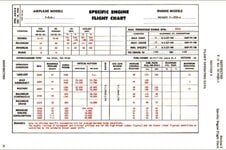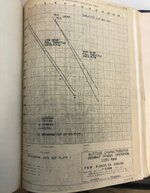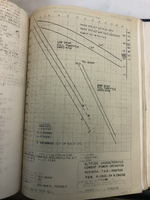DarrenW
Staff Sergeant
Corky Meyer famously said that the reason for the Corsair being faster than the Hellcat in neutral blower was that it used ram air and the Hellcat did not. The Corsair pilot COULD however select between DIRECT (ram air) or ALTERNATE, which allowed warm air to be taken from the engine compartment.

The Corsair flight manual states that the pilot would only select ALTERNATE in situations where carburetor icing was possible so I'm assuming that ram air was used in neutral blower during most Corsair operations. Knowing this, I examined multiple Corsair test reports to see what engine power levels were actually available in neutral blower and then compared this to what can be found in Hellcat test reports. Astonishingly, I calculated that the Corsair had on average less than 50 extra horsepower, but still managed to be on average 23 mph faster (S/L to 5,000 feet). From test data I calculated that it took roughly 20 extra horsepower to improve the maximum level speed of the Hellcat at sea level by just 1 mph. Added to this, engine charts show the R-2800-8 developing the exact same horsepower at each critical altitude with or without ram. All of this tells me that ram air had little to do with the Corsair's deciding speed advantage in main stage so it must be related mostly to aerodynamics.
My take is that the narrower fuselage cross section and more importantly the unique wing design were the primary attributes which made the Corsair faster than the Hellcat. I have read that the gull-wing had a positive effect on interference drag normally found at the wing root, another reason why Vought decided on the layout. Granted, the drag coefficients of the two were very close in NACA reports but these were calculated at 100 mph so it's my belief that the difference in overall drag between the two only grew as speeds increased. This is probably why pilots have claimed that the two could often hold cruise formation together at basically the same engine settings. The difference in speed also seems to be more apparent at lower altitudes, probably due to the denser air where airframe drag has the most effect on an aircraft's overall speed (assuming that induced drag between the two aircraft remain fairly close as altitude increases).
Agree or disagree?
I've also noticed that using ram air at various engine settings can also raise the critical altitude (as seen in the Corsair flight manuals). Could someone explain in easy terms why this is so? I'm assuming it's connected to the cooling effect ram air provides which raises manifold pressure but I don't know the exact science behind it all.

The Corsair flight manual states that the pilot would only select ALTERNATE in situations where carburetor icing was possible so I'm assuming that ram air was used in neutral blower during most Corsair operations. Knowing this, I examined multiple Corsair test reports to see what engine power levels were actually available in neutral blower and then compared this to what can be found in Hellcat test reports. Astonishingly, I calculated that the Corsair had on average less than 50 extra horsepower, but still managed to be on average 23 mph faster (S/L to 5,000 feet). From test data I calculated that it took roughly 20 extra horsepower to improve the maximum level speed of the Hellcat at sea level by just 1 mph. Added to this, engine charts show the R-2800-8 developing the exact same horsepower at each critical altitude with or without ram. All of this tells me that ram air had little to do with the Corsair's deciding speed advantage in main stage so it must be related mostly to aerodynamics.
My take is that the narrower fuselage cross section and more importantly the unique wing design were the primary attributes which made the Corsair faster than the Hellcat. I have read that the gull-wing had a positive effect on interference drag normally found at the wing root, another reason why Vought decided on the layout. Granted, the drag coefficients of the two were very close in NACA reports but these were calculated at 100 mph so it's my belief that the difference in overall drag between the two only grew as speeds increased. This is probably why pilots have claimed that the two could often hold cruise formation together at basically the same engine settings. The difference in speed also seems to be more apparent at lower altitudes, probably due to the denser air where airframe drag has the most effect on an aircraft's overall speed (assuming that induced drag between the two aircraft remain fairly close as altitude increases).
Agree or disagree?
I've also noticed that using ram air at various engine settings can also raise the critical altitude (as seen in the Corsair flight manuals). Could someone explain in easy terms why this is so? I'm assuming it's connected to the cooling effect ram air provides which raises manifold pressure but I don't know the exact science behind it all.
Last edited:



